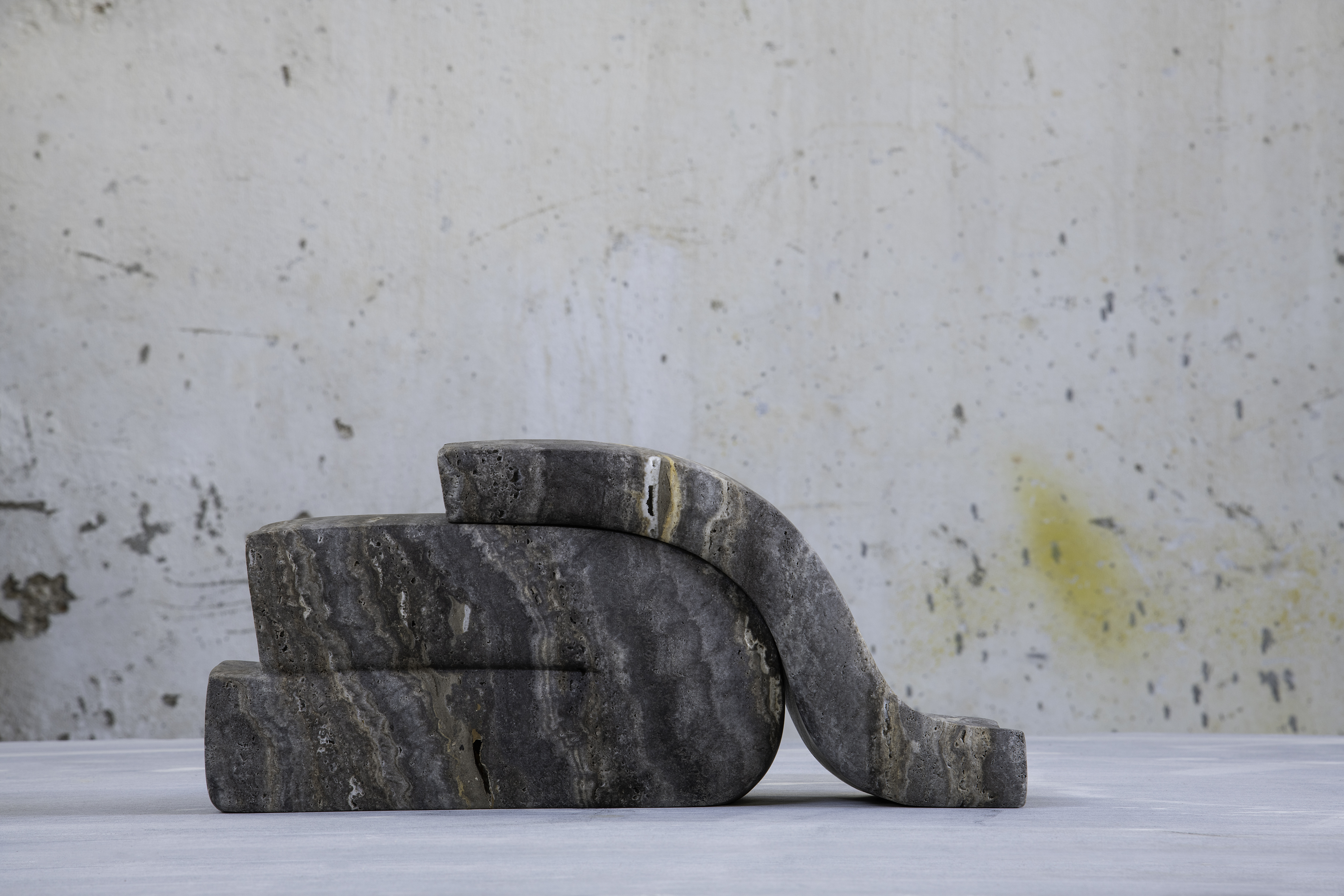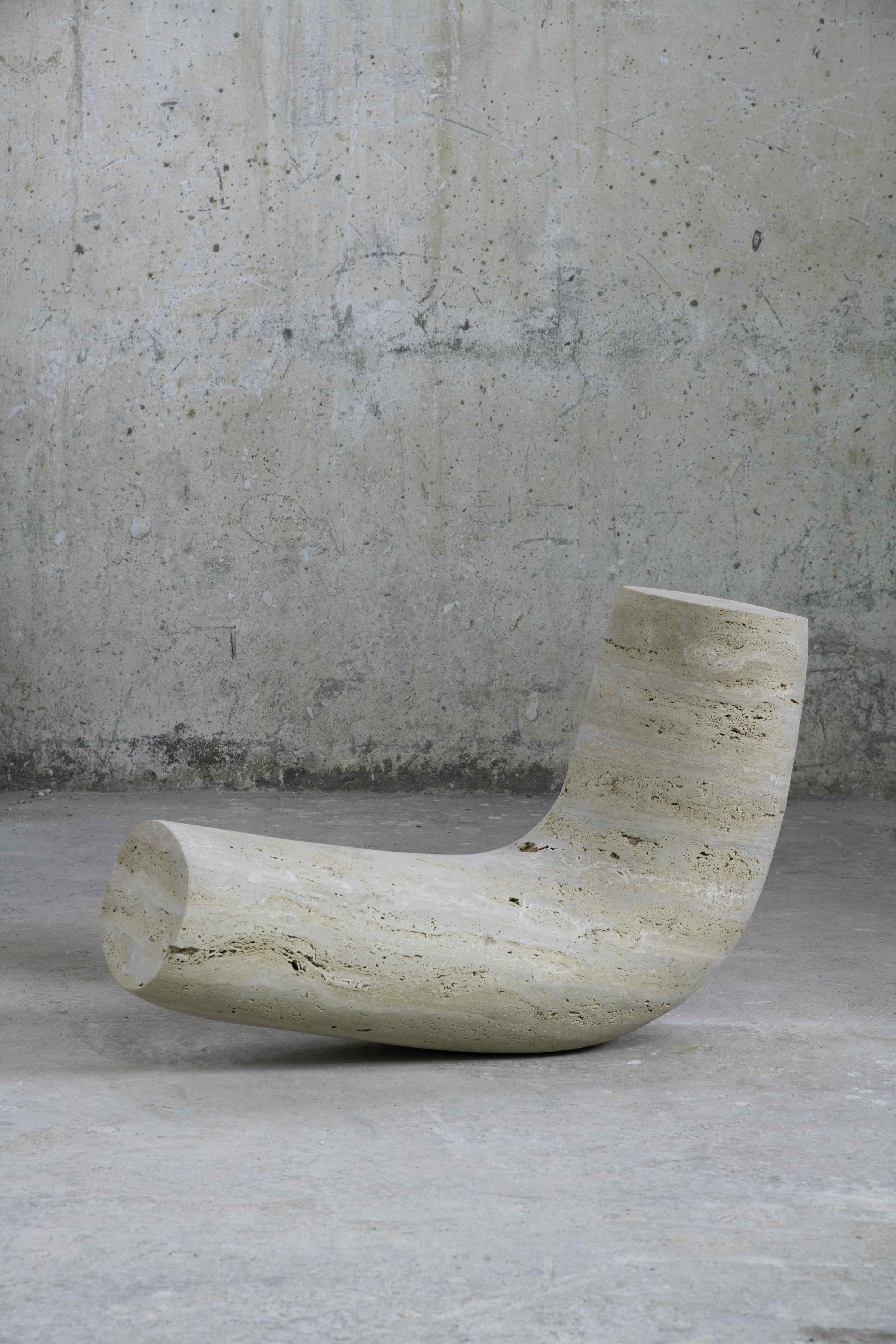Close Reading
Najla El Zein’s Seduction series tells a story – not in words, nor even in images, but a story nonetheless. Over the course of the series, two forms which are subtly gendered (here, in the first pairing, they are labeled m and f) undergo a slow but inexorable merging, an overcoming of distance. There is no one way to read this narrative. While certainly sensual, it is by no means carnal. The forms rather play out a subtle and multivalent psychodrama, which might (or might not) relate to El Zein’s own biography, or for that matter, that of anyone who encounters the work. It is a novel and complex way to rethink furniture, yet entirely fitting, given that seating surrounds us and supports us, cradling our bodies just as intimately as any lover.
![Najla El Zein, Seduction, f]()

Carmen D’Apollonio also explores this latent intimacy of everyday objects in herlamps, frankly and poignantly,Banana Split.
Against the organic forms that El Zein and D’Apollonio employ, Konstantin Grcic’s Volume M – one of a series of six, equally reductive forms – seems even more stark than it otherwise would. It happens to share its title with one of El Zein’s sculptures, but here the reference is to the overall silhouette, which traces the pointed shape of the letter. Featureless apart from the natural veining of the sandblasted marble and a neat hole drilled into each side (an allusion to the similar feature in Achille and Pier Giacomo Castiglioni’s Arco lamp of 1962), the object is also only notionally functional. Yet it can serve as a book rest; and thus this abstract artifact, too, connects to the idea of narrative - an apt demonstration of the way that humans make stories from everything they touch.
DNA is a collaborative essay project, intertwining three gallery programs into a single, generative presentation.





